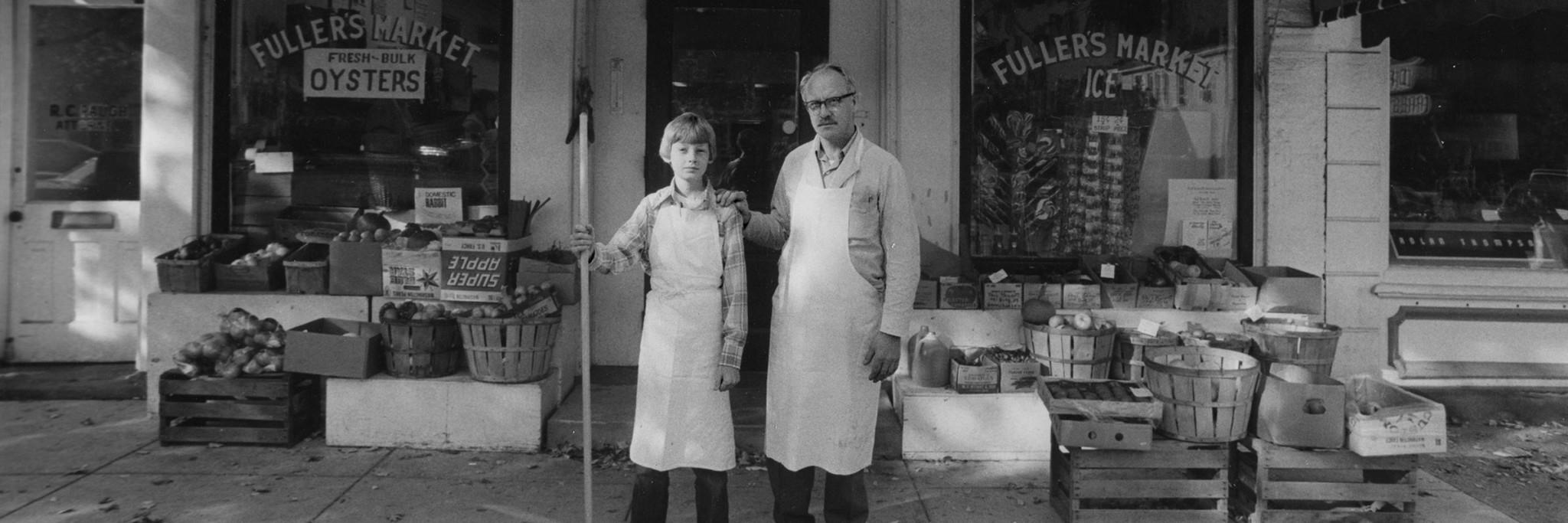On an October weekend in 1975, a pair of mustached gentlemen from the East Coast arrived in Granville, Ohio, on a Cold War assignment for the United States government. Writer Howard Cincotta and photographer Anestis Diakopoulos were employed by the U.S. Information Agency, and their mission was to create a favorable portrait of small-town American life for a largely skeptical Soviet audience.
The U.S. Information Agency (USIA) was formed by President Dwight D. Eisenhower in 1953, and its goal was generally twofold: to counter Soviet and other anti-American hype abroad (including the perceived negative influence of Hollywood) and to assure an uneasy American audience that their country was “working to build a better world.” Russian-language AMERIKA was the agency’s flagship magazine, distributed under a cultural exchange agreement with the Soviet Union, who in turn sold an English-language publication in this country called Soviet Life. Eisenhower reasoned that few people would accept straightforward propaganda if they perceived it as such, so the USIA advocated American interests through various media, which appeared to be independent of each other. This created both wider distribution of its message and also the impression that supporting opinion was coming from more than one source. The agency and its publications disbanded after the collapse of the Soviet Union and the end of the Cold War in the early 1990s.
AMERIKA was a large-format periodical that resembled the popular LIFE magazine, with abundant high-quality and appealing photographs. This was no coincidence. According to writer Howard Cincotta, “Soviet citizens didn’t believe much of anything governments told them—ours or theirs—but actual photographs were another matter. That was the one key to the magazine’s success: a window to the West for people who could only dream of traveling there.”
Why Granville? Cincotta explains that the greatest separation in Soviet society of those days was not social class, but the divide between urban and rural. Rural, to Russians, was synonymous with poverty and isolation, and they considered the vast majority of non-urban America to be a rather grim place to live. “We decided to counter that stereotype by identifying a small community that was attractive, prosperous, and very importantly, had a college to enrich the town’s cultural life. Voilà, Granville and Denison.”
To give Cincotta and Diakopoulos a starting place in the community, their USIA story editor went to Granville’s largest employer in 1975, Owens-Corning, where the personnel department put them in touch with engineer and economic analyst Ken Apacki and his wife Carol. The couple provided a perfect connection to Granville for the journalists, who still remember them warmly. The feeling was mutual. “They were friendly and funny and charming—it was great to be with visitors who were falling in love with our town,” says Carol. “They got so much more than they expected when they came—it was a glorious fall weekend. You could see them thinking, ‘do people really live like this?’” Both visitors confirm that it was a rare experience of warmth and hospitality, and they still remember details of Granville vividly after 37 years.
The story they published in AMERIKA had never been published in English or read by an American audience (until recently when it appeared in the Granville Historical Society’s newsletter, The Historical Times). It was translated into Russian and distributed in the Soviet Union in 1977. It served the intention of the USIA well, describing to Soviet readers an appealing rural town in the American Midwest, with history and cultural resources—a traditional village thriving in a modern economic world. Cincotta emphasizes that it may have been propaganda, but they were not in the business of fabricating facts and stories. The journalists succeeded so well in accurately capturing the characters and places and patterns of life in Granville at that time that the story now serves the unintentionally valuable purpose of a Granville time capsule from the 1970s. Diakopoulos expresses “mild amusement” to learn that the photojournalistic efforts of his early career have managed to age into the category of “historical,” but he’s pleased to have his images appreciated.
As with any time capsule, the world around it has gone about the business of changing day by day—the Opera House burned down in 1982, Fuller’s Market closed in 1985, the economic promise of Dow Chemical came in 1977 and was gone by 1992, and Owens-Corning peaked at 1,000 employees in the early 1980s before cutbacks in research and staff reduced it by more than half. Many of the people named in the original AMERIKA story are now gone.
The Apackis think back on the days this story evokes with some nostalgia and suggest that moment in time might have been a “turning point” in Granville’s story, “at least in our eyes.” The town grew rapidly, real estate prices rose, the social systems in town seemed to shift. “It was the end of one phase, and in the following years, more changes were coming.” But on the whole, both Carol and Ken feel that Howard Cincotta’s story still reflects essential truths about life in Granville. “There’s still the same sense of community,” Carol says. “In many ways the quality of life is as high or higher,” listing numerous town events and volunteer activities: the 4th of July, community picnics, concerts on the green, Healing Arts for Haiti, and the vitality of the churches. The Apackis are still as committed to and involved in the life of Granville as they were in 1975, and once again they’re host parents this year for one of Denison’s international students.
Ken agrees that much of what Cincotta wrote could still be said today. “Paraphrasing Howard’s comments, we know change is coming—how to make it orderly and compatible with the kind of town we want is still the challenge.”
This article originally appeared in the Granville Historical Society’s publication, The Historical Times.

